Quick Summary: AI use cases allow businesses to solve real problems with measurable results. This blog explores practical artificial intelligence use cases across healthcare, finance, retail, logistics, and more. Learn how companies apply data, models, and workflows to cut costs, improve operations, and deliver better customer experiences.
Artificial Intelligence (AI) is driving business innovation across industries, offering solutions that enhance efficiency, reduce costs, and improve customer experiences. From predictive analytics in finance to automation in manufacturing, AI delivers measurable benefits that directly impact revenue and operational performance.
The global AI software market has seen remarkable growth. Valued at $14.69 billion in 2019, the market is projected to reach $126 billion by 2025, with a compound annual growth rate (CAGR) of 26%. This growth highlights the increasing adoption of AI technologies across sectors.
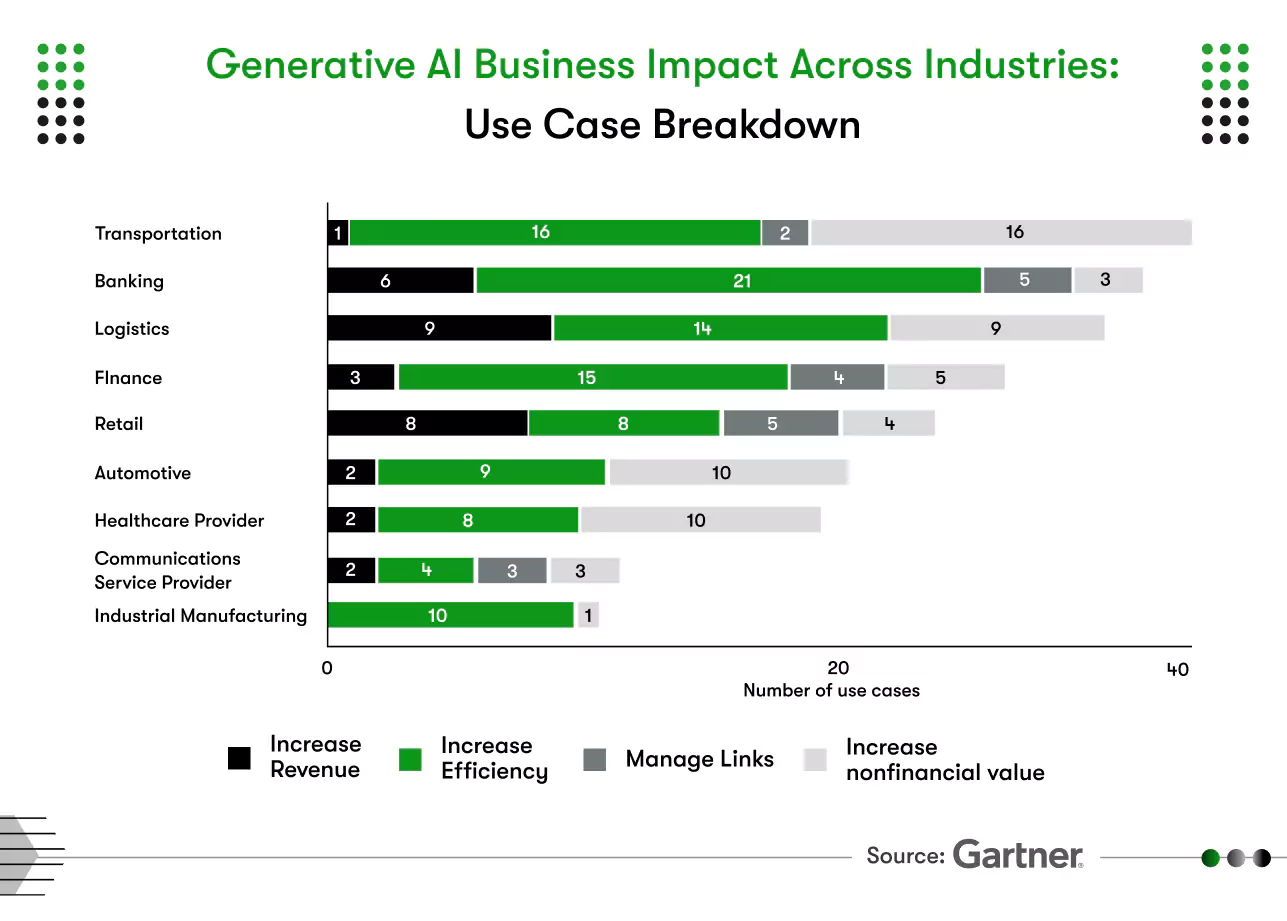
As businesses explore AI, decision-makers are seeking actionable insights into which technologies best address their challenges and how to implement them seamlessly.
This guide highlights AI applications in healthcare, retail, finance, and manufacturing, showcasing their business value and offering strategies for successful adoption through tailored AI development services.
Understanding these applications allows business leaders to make informed decisions and leverage AI to gain a competitive advantage in today’s data-driven environment.
What is an AI use case?
An AI use case is a clearly defined business problem paired with data, a model approach, a workflow, and a target outcome. Strong AI use cases aligned with current AI trends always define a baseline and success metrics. They also assign ownership, track changes, and plan for monitoring. This keeps teams aligned and prevents expensive proof-of-concept loops that never reach production. Top AI use cases start small, deliver a quick win, and expand once value is proven.
AI Use Cases Across Industries and How Artificial Intelligence Is Transforming Business Operations
AI helps industries run more efficiently by improving operations, strengthening customer connections, and guiding smarter decisions. From healthcare to manufacturing, companies use AI use cases to lower costs, raise efficiency, and improve performance to stay competitive.
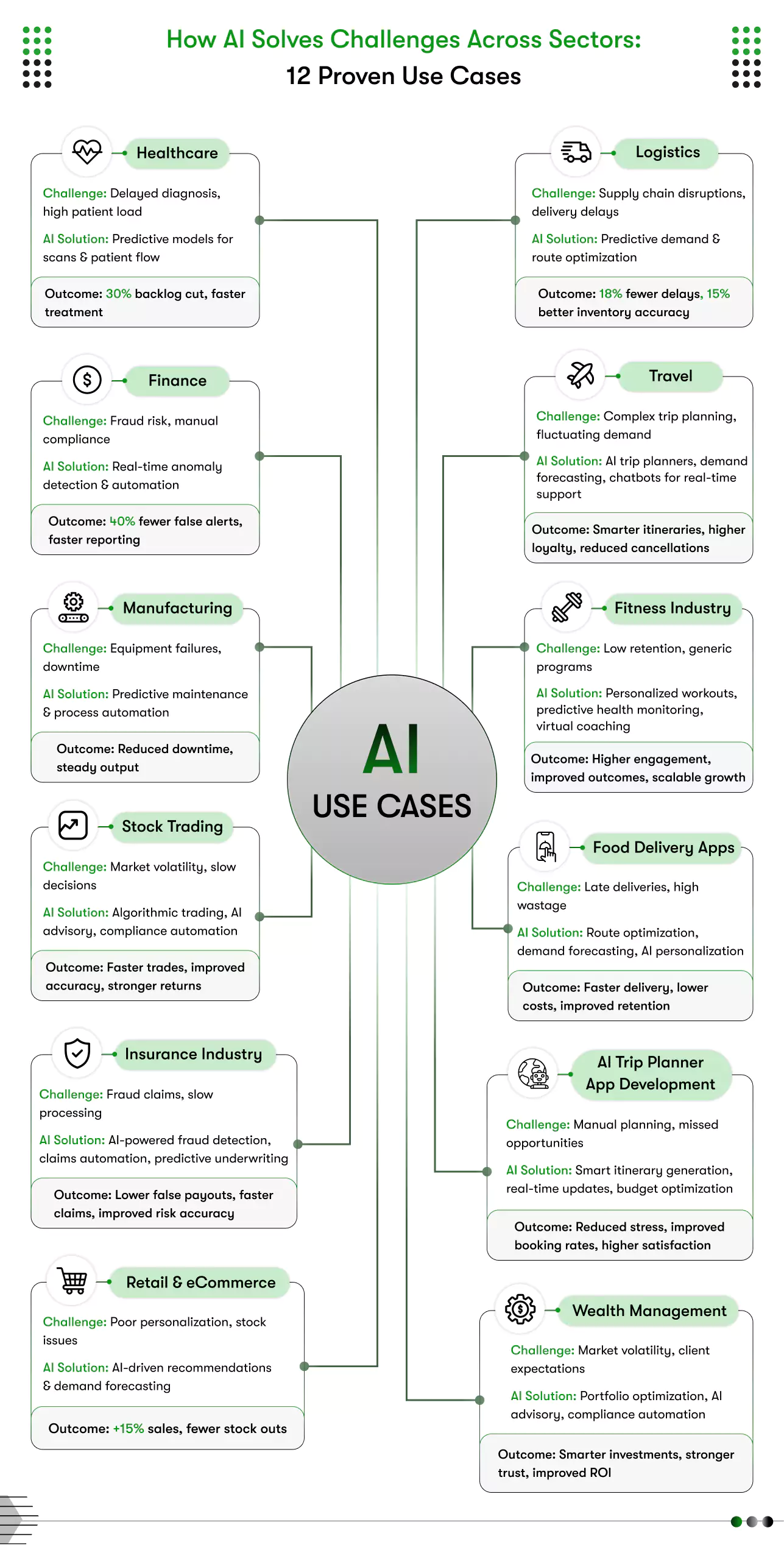
Many of these AI business ideas evolve into practical solutions that drive measurable business results.
1. AI in Healthcare
Hospitals and care networks face growing patient numbers, capacity constraints, and pressure to improve outcomes without raising expenses. Manual administration, inconsistent triage, and delayed diagnosis increase stress. Artificial intelligence in healthcare addresses these issues by enabling quicker detection, improving patient flow, and ensuring reliable follow-ups that protect patient safety and clinician time.
- Early detection and triage: Predictive models analyze imaging, labs, and patient timelines to identify high-risk cases sooner.
- Virtual assistance: AI-powered assistants handle symptom intake, reminders, and follow-ups, escalating only when human intervention is required.
- Operations control: Predictive tools forecast bed flow, no-show risk, and staffing needs to stabilize daily operations.
Business impact to target
Expect shorter time-to-diagnosis, fewer unnecessary re-scans, lower length of stay, and steadier clinic utilization. Finance can track avoided repeats, slot recovery, overtime reduction, and improved documentation quality. Early detection, triage, and operations control are top AI use cases because they improve both costs and patient experience.
Let’s understand how AI in healthcare works through a mini-scenario of a hypothetical mid-size network.
A 600-bed hospital reduced radiology backlogs by 30% and saved $1.2M annually by piloting AI triage models. Radiology turnaround improves, weekend backlogs fall, and clinics recover idle slots through proactive re-booking.
The team captures AI use cases examples as a playbook, then extends the same pattern to cardiology and oncology. Leadership sees a clear ROI narrative that links quality, throughput, and savings in one view.
Implementation checklist that de-risks delivery
- Start with one pathway, one metric, one pilot site.
- Secure data access, consent logs, audit trails, and bias checks.
- Embed model outputs into existing EHR and scheduling steps to avoid workflow breaks.
- Set monitoring for drift, accuracy, and alert fatigue before go-live.
These steps turn generative AI use cases by industry into stable, governed services rather than one-off experiments that fade after a demo.
2. AI in Retail & eCommerce
Business challenge
Retail and e-commerce companies face constant pressure to keep customers engaged, manage stock accurately, and optimize sales strategies. Missed demand signals or poor personalization can quickly lead to lost revenue and lower customer loyalty.
How AI solves it
AI use cases in retail and eCommerce personalize shopping journeys, streamline daily operations, and forecast demand with accuracy. AI in eCommerce also plays a key role in helping brands cut costs, increase efficiency, and deliver seamless customer experiences that keep shoppers satisfied.
Use Case: Personalized Shopping Experiences with AI
Customers expect to feel understood every time they shop. AI analyzes browsing patterns, purchase history, and behavior to deliver tailored recommendations and promotions. These AI use cases by industry show how personalization makes customers return more often, improving revenue and long-term loyalty.
Customer-Facing Solutions: AI-Powered Virtual Assistants
AI-driven assistants support shoppers with quick answers, guided product discovery, and round-the-clock availability. They turn routine queries into positive experiences, making buying decisions easier. Generative AI use cases by industry highlight how assistants improve responsiveness, strengthen brand perception, and free your staff for higher-value tasks.
Data Analysis and Predictive Insights: Sales Forecasting with AI
AI analyzes buying patterns and market trends to forecast demand. Walmart leverages AI to predict which products will sell most, helping you manage stock efficiently and avoid shortages during peak periods.
AI use cases examples show how predictive analytics can give your business an edge. You can ensure products are available when customers want them, reduce excess inventory, and improve operational efficiency, keeping your store profitable and your shoppers happy.
Operational Efficiency: AI for Inventory Management
Managing inventory at scale can be complex. AI tracks stock levels in real time, alerts you to shortages, and helps avoid overstock during peak seasons. These real world applications of AI reduce waste, cut carrying costs, and ensure customers always find what they need.
Takeaway
Artificial Intelligence use cases in retail prove that when personalization, predictive insights, and operational efficiency work together, you deliver shopping experiences that delight customers and drive measurable business results.
3. AI in Finance
Business challenge in finance
Banks and financial institutions face nonstop fraud attempts, strict compliance demands, and pressure to serve clients quickly. Manual checks miss threats, waste time, and frustrate customers. In response, AI in Fintech industry solutions are emerging as a smarter way to detect risks, improve accuracy, and speed up decisions. Leadership needs faster, smarter systems that protect revenue and maintain trust.
How AI solves it
AI strengthens fraud detection, speeds compliance, and personalizes client service. Systems analyze millions of transactions instantly, spot risks early, and guide smarter decisions. Leaders gain efficiency, accuracy, and measurable cost savings without expanding headcount.
Use Case: Fraud Detection with AI
CFOs lose sleep over rising fraud costs. AI can flag risks instantly and cut false alarms that waste staff time. AI systems monitor transaction patterns in real time, flagging irregular behavior instantly. These AI use cases by industry show how predictive monitoring detects issues that humans may miss, giving you a proactive defense against emerging risks while keeping operations smooth.
Customer-Facing Solutions: AI-Powered Support
Clients expect fast, accurate support at all times. AI-driven assistants handle balance queries, payment reminders, and account insights while escalating complex requests to staff. This ensures customers receive instant, reliable responses, freeing your team for strategic advisory work. Generative AI use cases by industry highlight how these assistants scale client service without increasing costs.
Data Analysis and Predictive Insights: Smarter Investments
Portfolio decisions depend on timely and accurate information. AI reviews market data, economic shifts, and customer profiles within seconds. It highlights risks and growth opportunities with clear predictions. Executives use this clarity to optimize portfolios, reduce errors, and maintain a competitive edge.
Operational Efficiency: Automating Core Processes
Reconciliation, compliance checks, and reporting consume valuable hours. AI automates these repetitive tasks with precision. Teams spend less time on paperwork and more on strategic analysis. Finance leaders report fewer errors, faster reporting, and significant operational savings.
Let’s understand how AI in finance works through a mini-scenario of a hypothetical regional bank
A regional bank cut compliance costs by 40% while reducing false fraud alerts by 30% in one quarter. Fraud alerts became more accurate, reducing false positives by 30%. At the same time, reporting time dropped by 40%, giving staff more bandwidth for client-facing work. Many decision-makers also ask what are AI use cases in banking? This example proves that AI delivers measurable improvements in cost, accuracy, and client satisfaction within one quarter.
Takeaway
Top AI use cases in finance include fraud detection, predictive analytics, client support, and automation. These applications help institutions lower costs, strengthen resilience, and deliver consistent value. With a clear roadmap, they can move from pilot to production quickly and generate measurable ROI.
4. AI in Manufacturing
Business challenges in manufacturing
Production facilities face pressure to maintain quality, avoid downtime, and control costs. Equipment failures, workflow bottlenecks, and manual processes create inefficiencies that slow growth and reduce competitiveness.
How AI helps
AI use cases in manufacturing make production more reliable. By monitoring equipment performance, predicting failures, and automating repetitive tasks, AI enables smoother workflows, consistent quality, and reduced operational risks.
Use Case: Predictive Maintenance with AI
Unplanned downtime can bring production lines to a halt and increase costs. Predictive maintenance uses AI to analyze sensor data and spot early warning signs of failure. Such AI use cases examples show how predictive maintenance lets manufacturers schedule repairs proactively and prevent production halts.
Customer-Facing Solutions: Smarter Support
Manufacturers also compete on service. AI-powered assistants give customers instant answers on warranties, parts, and product issues, while more complex cases are routed to specialists. Generative AI use cases by industry show how faster response times increase trust and free internal teams to focus on innovation.
Data Analysis and Predictive Insights: Optimizing Production
AI reviews operational data around shift output, material flow, and quality checks. Real-time insights uncover bottlenecks and improve resource allocation. Managers reduce waste, balance workloads, and maintain steady production without costly interruptions. In addition, businesses can build AI chatbots app solutions to improve team communication and resolve production issues faster..
Operational Efficiency: Automating Repetitive Processes
Tasks such as assembly verification, inspections, or packaging often consume staff time. Apps that use artificial intelligence automate these steps with accuracy, improving speed and consistency. Real world applications of AI in process automation prove how repetitive tasks can be scaled without losing precision.
Takeaway
AI in finance delivers measurable wins across fraud detection, compliance, investments, and operations. Institutions that adopt these solutions lower costs, reduce risks, and improve client trust. Leaders see ROI within months, not years.
5. AI in Stock Trading
Business Challenges in Stock Trading
Firms in stock trading face constant volatility, compliance pressure, and rising competition. Human-led analysis often reacts too slowly. Teams struggle to process global news, market sentiment, and technical signals at the required speed. Exploring AI use cases by industry shows how trading firms can overcome these hurdles and protect profitability.
How AI Helps
AI in stock trading delivers precision, speed, and reliability. Advanced models analyze huge data sets, track sentiment, and predict outcomes. Algorithms act within milliseconds, improving execution and minimizing costly delays. Businesses gain stronger returns while managing risk more effectively.
Use Case: Algorithmic Trading with AI
Manual strategies fall behind in highly liquid markets. AI algorithms process market data instantly and identify profitable entry or exit points. The use of AI in trading analytics improves execution speed, reduces slippage, and sustains performance during volatile sessions.
Customer-Facing Solutions: AI-Powered Advisory
Investors expect personalized recommendations, not generic reports. AI-powered advisory systems review client history, risk levels, and market movements to provide tailored insights.
Artificial intelligence in stock trading improves client trust, reduces manual workload, and strengthens advisor productivity at scale. Proven AI use cases in advisory show how firms deliver better experiences while increasing long-term client value.
Data Analysis and Predictive Insights: Smarter Decisions
Markets are influenced by news, earnings calls, and social trends. Predictive analytics within AI in stock trading processes this data to forecast trends. Traders move from reacting late to making proactive choices, ensuring sustainable growth and competitive advantage.
Operational Efficiency: Risk and Compliance Automation
Regulatory checks consume time and resources. AI systems monitor transactions, flag anomalies, and generate reports in real time. Firms improve compliance, reduce human error, and cut costs. How AI is changing trading is visible in smoother, risk-aware operations.
Takeaway
AI in stock trading improves accuracy, decision-making, and risk management. Businesses that adopt AI gain measurable results, stronger compliance, and better client trust. Leaders ready to modernize should act today, learning from real world applications of AI, to secure future-ready trading systems that drive higher profitability.
6. AI in Insurance Industry
Business Challenges in Insurance
Insurers face challenges with fraud detection, claim processing, and risk evaluation. Manual reviews are slow and prone to errors. Rising competition also demands faster claim settlements and personalized services. AI in the insurance industry addresses these issues, helping firms improve efficiency, rebuild customer trust, and reduce operational costs.
How AI Helps
AI in the insurance industry simplifies complex processes. Predictive analytics improves risk assessment, while automation accelerates claims. AI-driven fraud detection reduces losses and strengthens compliance. The real impact of AI in insurance industry can be seen in how firms improve customer satisfaction, reduce costs, and operate with sharper accuracy across every workflow.
Use Case: Fraud Detection with AI
Fraudulent claims create significant financial losses. AI models analyze claim histories, customer behavior, and transaction data to flag anomalies. Proven AI use cases in insurance show how firms gain faster detection and reduce false payouts. Leaders achieve measurable savings and higher trust.
Customer-Facing Solutions: Faster Claims Processing
Delays in claims reduce customer loyalty. AI-powered claim automation verifies documents, cross-checks data, and approves eligible cases within minutes. Artificial intelligence in stock trading showcases speed benefits, and insurers mirror that advantage in claims, providing quick resolution and building stronger relationships with policyholders.
Data Analysis and Predictive Insights: Risk Assessment
Accurate risk assessment defines profitability. AI systems analyze medical records, driving history, and financial behavior. Predictive models deliver more precise underwriting decisions. Real world applications of AI in insurance reduce risk exposure, improve pricing accuracy, and ensure sustainable portfolio growth.
Operational Efficiency: Policy Management Automation
Managing policies involves repetitive, error-prone tasks. AI automates policy renewals, reminders, and compliance checks. Leaders see fewer administrative costs and smoother operations. Proven AI use cases by industry confirm efficiency gains, freeing teams to focus on product innovation and customer engagement.
Takeaway
AI in the insurance industry delivers clear value in fraud prevention, claims automation, and risk management. Businesses that implement AI see faster decisions, lower costs, and stronger client trust. Leaders ready to modernize insurance operations with AI, supported by expert AI developers skills, secure long-term growth and competitive strength.
7. AI in Travel
Business Challenges in Travel
Travel businesses struggle with fluctuating demand, rising customer expectations, and complex booking operations. Manual planning leads to errors, delays, and poor traveler experiences. Global operators must balance costs, personalize journeys, and optimize schedules without losing efficiency or profitability. Proven AI use cases by industry show how travel firms overcome these hurdles and improve customer satisfaction.
How AI Helps
AI in travel personalizes booking experiences, predicts demand, and improves operations. Predictive models optimize pricing, while chatbots manage customer support. AI also strengthens fraud checks in bookings. Businesses applying AI improve margins, enhance traveler satisfaction, and achieve scale with consistent quality.
Use Case: AI-Powered Trip Planning
Traditional trip planning consumes time and effort. AI trip planner app development uses data on preferences, budgets, and destinations to create tailored itineraries. Travelers receive smart suggestions instantly. For travel businesses, investing in AI Trip Planner App Development is more than a tech upgrade; it is a strategy to increase loyalty and upsell premium services through real-world applications of AI.
Data Analysis and Insights: Energy Consumption Forecasting
Understanding how and when customers consume energy is critical. AI reviews usage history, environmental conditions, and grid performance to forecast future demand. AI demand forecasting use cases help providers balance supply with consumption, reduce waste, and maintain profitability without compromising service quality.
Operational Efficiency: Grid and Resource Management
Modern grids must integrate renewables, manage load fluctuations, and respond to changing conditions instantly. AI automates grid monitoring, identifies inefficiencies, and recommends adjustments in real time. Artificial intelligence use cases in grid management demonstrate how automated controls stabilize power delivery and support cost-effective resource allocation.
Takeaway
AI in travel creates value across trip planning, personalized support, and operational efficiency. Businesses adopting AI-driven systems deliver better traveler experiences, optimize costs, and grow sustainably. Leaders ready to modernize travel services with AI can learn from proven AI use cases to strengthen competitiveness and attract global clients.
8. AI in Fitness Industry
Business Challenges in Fitness
Fitness businesses struggle with retaining members, offering personalized programs, and managing operational costs. Manual coaching limits scalability, while generic workout plans reduce engagement. Exploring AI use cases in fitness shows how gyms, apps, and wellness companies deliver individualized results and compete effectively.
How AI Helps
AI in the fitness industry enables personalized training, predictive health monitoring, and automated progress tracking. Machine learning models adjust workout intensity, while chatbots offer real-time support. AI also streamlines scheduling and payments. Businesses adopting AI see higher retention, lower costs, and stronger customer loyalty.
Use Case: Personalized Workout Programs
One-size-fits-all training frustrates members. AI platforms design workout routines using individual health data, fitness levels, and goals. Programs adapt dynamically as performance improves. Proven AI use cases in fitness show higher user satisfaction, increased adherence, and measurable improvements in outcomes.
Customer-Facing Solutions: Virtual Coaching
Clients expect guidance beyond gym walls. AI-powered apps offer real-time coaching through video analysis and voice feedback. Proven AI use cases examples in coaching help businesses scale personalized support without needing large teams. Members receive value-driven support anytime, anywhere.
Data Analysis and Predictive Insights: Health Monitoring
Wearables generate huge amounts of health data. AI interprets heart rate, sleep cycles, and calorie burn to predict potential risks. Businesses offering predictive health insights strengthen brand trust and create new revenue streams through value-added wellness services.
Operational Efficiency: Gym and App Management
Running fitness facilities involves scheduling, payments, and resource allocation. AI systems automate these repetitive tasks, optimize class sizes, and balance trainer workloads. Leaders benefit from smoother operations, reduced costs, and stronger customer experiences at scale.
Takeaway
AI in the fitness industry delivers value across training, coaching, and operations. Businesses adopting AI-driven systems improve retention, enhance customer experiences, and increase profitability. Leaders ready to modernize fitness services with AI can create scalable solutions that meet global market demand.
9. AI in Logistics
Business challenges in logistics
Supply chain leaders face constant pressure to reduce costs, maintain speed, and meet customer expectations. Delays, fuel expenses, and poor inventory management can quickly disrupt delivery timelines and damage client relationships.
How AI supports logistics
AI use cases in logistics focus on predictive supply chain management, route optimization, and automation. These solutions give operators real-time visibility, accurate forecasting, and efficiency gains that strengthen both profitability and customer satisfaction.
Use Case: Predictive Supply Chain Management
Disruptions such as weather, traffic, or demand surges often slow shipments and inflate costs. Predictive supply chain management powered by AI analyzes historical data and external factors to flag risks early. Companies applying these AI use cases examples adjust routes, rebalance inventory, and keep operations resilient.
Data Insights: Route and Inventory Optimization
Route efficiency and inventory balance determine service reliability. Artificial intelligence use cases in logistics review traffic conditions, delivery history, and warehouse capacity to recommend the best allocation of resources. Predictive analytics supports accurate forecasting, preventing shortages, cutting fuel use, and improving delivery speed.
Operational Efficiency: Autonomous Logistics and Tracking
Warehousing and fleet coordination require accuracy across multiple moving parts. Apps that use artificial intelligence automate shipment monitoring, track fleet performance, and support autonomous logistics systems. In logistics, real world applications of AI support accurate tracking, reduce wasted effort, and improve the flow of goods across the supply chain.
Mini-scenario (global distributor)
A global distributor improved inventory accuracy by 15% and reduced delivery delays by 18% after deploying AI tracking. Within six months, delivery delays fall by 18%, inventory accuracy improves by 15%, and overall logistics costs decline. AI use cases give logistics leaders a clear view of how artificial intelligence delivers measurable improvements in speed, accuracy, and profitability.
Takeaway
AI in logistics enables companies to forecast demand, optimize routes, and automate supply chain operations. Organizations that adopt artificial intelligence use cases gain better visibility, lower costs, and stronger resilience against disruption.
10. AI in Food Delivery Apps
Business Challenges in Food Delivery
Food delivery businesses face operational bottlenecks, late deliveries, and rising customer expectations. Manual dispatching causes inefficiencies. Restaurants and platforms also struggle with food wastage, high delivery costs, and inconsistent customer experiences. Exploring AI use cases in food delivery shows how companies solve these challenges and protect profitability while improving customer loyalty.
How AI Helps
AI in food delivery apps streamlines operations, improves delivery accuracy, and personalizes customer interactions. Machine learning optimizes routes, while predictive analytics AI use cases forecast demand. AI-driven personalization increases order frequency. Exploring reveals how businesses reduce costs and deliver more consistent, satisfying customer experiences.
Use Case: Route Optimization with AI
Delayed deliveries frustrate customers and damage brand trust. AI algorithms analyze traffic, weather, and order density to recommend efficient routes. Proven AI use cases examples in logistics show how delivery platforms cut delays, save fuel, and improve on-time delivery rates.
Customer-Facing Solutions: Personalized Ordering
Customers expect quick, personalized recommendations. Apps that use artificial intelligence suggest meals based on order history, dietary preferences, and time of day. Such personalization increases engagement, boosts basket size, and builds stronger brand loyalty through consistent customer satisfaction.
Data Analysis and Predictive Insights: Demand Forecasting
Fluctuating demand causes food waste and staffing issues. AI-driven predictive analytics uses historical data and external factors to forecast orders. Real world applications of AI in demand forecasting help businesses reduce waste, optimize resources, and prepare for peak demand with precision.
Operational Efficiency: Automated Support and Inventory
Customer service and stock management drain resources. AI chatbots handle basic support queries instantly, while inventory systems predict shortages. Generative AI use cases by industry show how automation reduces overhead, prevents missed sales, and ensures smoother operations at scale.
Takeaway
AI in food delivery apps delivers value across logistics, personalization, and operations. Businesses that adopt AI improve delivery speed, reduce costs, and strengthen customer retention. Leaders ready to modernize food delivery platforms with AI unlock sustainable growth and long-term profitability.
11. AI Trip Planner App Development
Business Challenges in Trip Planning
Travelers often spend hours comparing flights, hotels, and activities. Manual planning leads to stress, missed opportunities, and higher costs. Travel businesses also face challenges with personalization, demand forecasting, and building loyalty in a competitive market.
How AI Helps
AI trip planner app development simplifies travel planning. Apps powered by AI recommend personalized itineraries, optimize budgets, and adapt to traveler preferences in real time. Exploring AI use cases in travel shows how businesses enhance experiences, increase engagement, and build long-term customer trust.
Use Case: Smart Itinerary Generation
Creating a balanced itinerary is difficult for most travelers. AI models analyze location data, budgets, and preferences to recommend schedules. Proven AI use cases by industry highlight how smarter itineraries increase booking frequency and improve satisfaction for both travelers and agencies.
Customer-Facing Solutions: Real-Time Assistance
Travelers expect instant guidance during trips. AI-powered chatbots provide real-time updates on delays, rebooking options, and local recommendations. Generative AI use cases by industry confirm how travel apps deliver consistent support, improve experiences, and strengthen loyalty even during unpredictable travel disruptions.
Data Analysis and Predictive Insights: Budget Optimization
Travel costs fluctuate constantly. AI reviews historical pricing, seasonal data, and demand surges to recommend budget-friendly bookings. Predictive insights help businesses reduce cancellations and increase completed bookings. These generative AI use cases by industry highlight smarter financial planning for both travelers and providers.
Operational Efficiency: Partner Management
Managing hotels, transport, and activity providers creates complexity. AI automates partner coordination, tracks performance, and ensures service consistency. Apps that use artificial intelligence streamline collaboration, cut manual effort, and improve margins for agencies managing global travel networks.
Takeaway
AI trip planner app development redefines travel with personalization, predictive insights, and efficiency. Businesses adopting AI-driven planning platforms increase revenue, strengthen client loyalty, and stand out in competitive markets. Leaders who act now unlock sustainable growth through proven AI strategies.
12. AI in Wealth Management Guide
Business Challenges in Wealth Management
Wealth managers face rising client expectations, market volatility, and growing compliance pressure. Manual analysis limits personalization. Firms must deliver faster insights while managing operational efficiency and maintaining regulatory transparency in a highly competitive sector. An AI in wealth management guide can help decision-makers understand how advanced tools meet these challenges with greater accuracy and client-focused solutions.
How AI Helps
AI in wealth management enables smarter portfolio strategies, real-time risk assessment, and automated reporting. Personalized insights strengthen client trust and increase retention. Exploring AI use cases examples shows how firms reduce costs and improve decision-making while offering clients tailored investment advice.
Use Case: Portfolio Optimization
Balancing portfolios manually consumes time and often misses opportunities. AI analyzes assets, risk tolerance, and goals to suggest optimal mixes. Proven apps that use artificial intelligence simplify decision-making, reduce errors, and provide investors with transparent, data-backed recommendations that improve long-term outcomes.
Customer-Facing Solutions: Personalized Financial Advisory
Clients demand advice that adapts to life events and market changes. AI-powered apps deliver personalized financial plans and instant updates. Real world applications of AI in advisory platforms prove how businesses improve responsiveness, increase engagement, and deliver high-value client experiences at scale.
Data Analysis and Predictive Insights: Risk and Compliance
Risk management remains critical in wealth management. AI monitors market signals, predicts downturns, and automates compliance checks. Predictive insights help managers adjust portfolios early. Firms reduce exposure, meet regulations, and gain client confidence with smarter, more transparent decision-making.
Operational Efficiency: Reporting and Automation
Compliance reporting and client communication drain resources. AI automates these repetitive processes, generates timely reports, and frees staff for higher-value work. Firms streamline operations, lower costs, and maintain consistent service quality while improving responsiveness across their networks.
Takeaway
AI in wealth management improves portfolio accuracy, advisory quality, and compliance. Firms that adopt AI achieve stronger client trust, higher efficiency, and sustainable growth. Leaders ready to implement AI-driven systems position their firms as trusted partners in modern financial markets.

How to Identify the Right AI Use Case for Your Business
Start with one problem that impacts revenue or customer experience. Check your data, set a clear success metric, and run a short pilot.
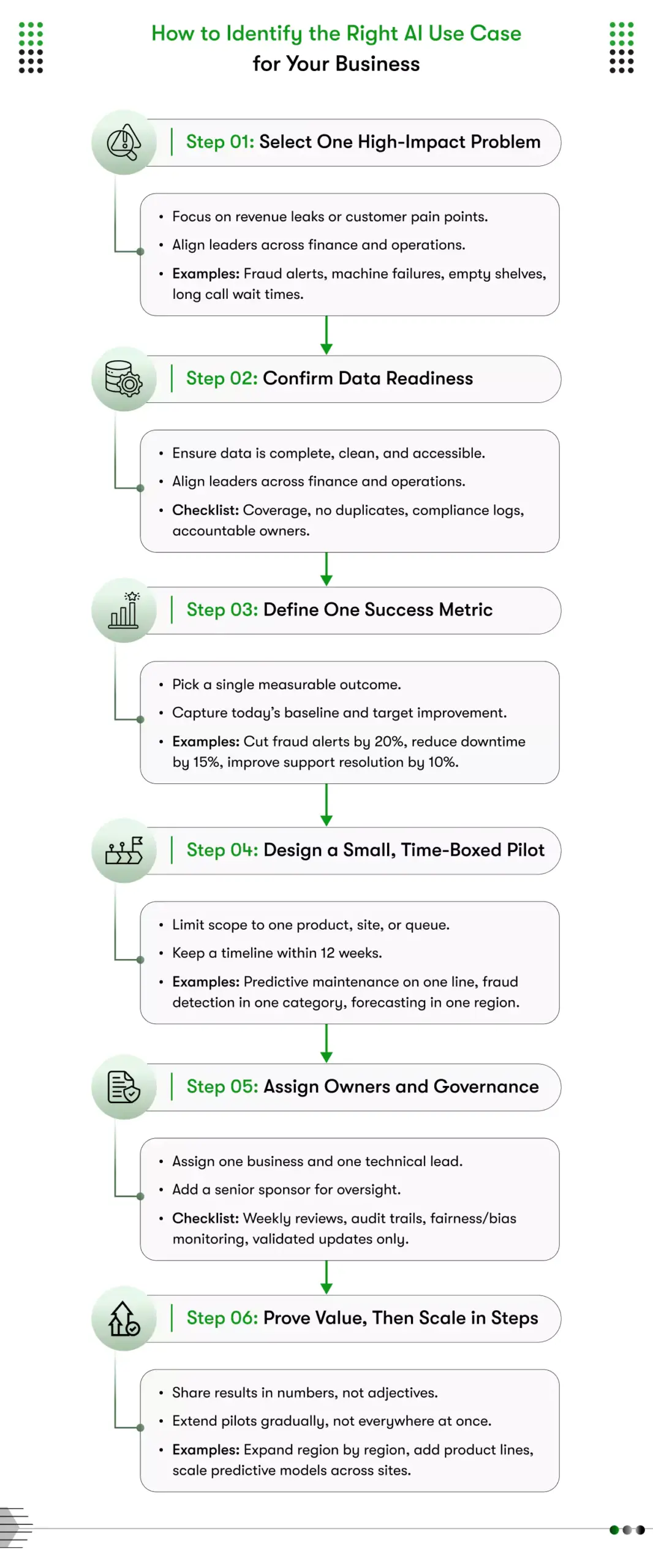
This approach reduces risk and proves value before you commit to larger investments.
Step 1: Select one high-impact problem
Start where money leaks or customers feel pain. Choose one process that directly affects revenue, cost, or customer experience. Make sure leaders across finance and operations agree that this problem deserves urgent attention. Strong AI use cases always begin with a challenge that matters to both the business and its customers.
Examples of high-impact problems
- Fraud checks create too many false alerts and increase customer frustration.
- Production lines stop frequently because machines fail without timely maintenance.
- Shelves run empty during peak demand, leading to missed sales and unhappy customers.
- Call centers struggle with long wait times, which reduces service quality.
Step 2: Confirm data readiness
AI requires data that is complete, clean, and accessible. Verify whether you have reliable sources for the chosen workflow. Confirm ownership, security permissions, and consistency before investing in models. Real world applications of AI succeed only when inputs meet standards.
What to review before starting
- Data coverage includes different timeframes, regions, and operating conditions.
- Duplicate or missing values are corrected before the model runs.
- Access permissions are secured and documented to meet compliance.
- Data ownership is clear, with accountability assigned to a named team.
Step 3: Define one success metric
Set a single measurable outcome that finance and operations teams can track. Capture today’s baseline and define a target for the pilot. Use metrics tied directly to cost savings, productivity, or customer satisfaction. AI use cases gain faster buy-in when goals are simple and shared.
Examples of success metrics
- Reduce false positives in fraud alerts by twenty percent within one quarter.
- Cut unplanned equipment downtime by fifteen percent in the pilot site.
- Improve first-contact resolution in support centers by ten percent.
- Shorten delivery lead times by twelve percent across one region.
Step 4: Design a small, time-boxed pilot
Keep the scope limited to one product, site, or support queue. Design the pilot to finish within twelve weeks. Prepare a rollback plan in case results do not meet the target. Generative AI use cases by industry show that pilots work best when timelines and scopes are precise.
Pilot scope examples
- A manufacturer tests predictive maintenance on one production line.
- A bank deploys fraud detection for a single product category.
- A retailer pilots demand forecasting in one region.
- A hospital applies scheduling models in one specialty department.
Step 5: Assign owners and governance
Strong adoption requires clear ownership. Assign one business leader and one technical lead to guide the pilot. Add a senior sponsor who clears blockers and reports progress to executives. Apps that use artificial intelligence remain trusted when governance includes regular monitoring and audits.
Governance actions to establish
- Conduct weekly reviews of accuracy, uptime, and error rates.
- Maintain full audit trails for model decisions and actions.
- Monitor fairness, drift, and bias with structured reports.
- Approve updates only after technical and business validation.
Step 6: Prove value, then scale in steps
Share pilot results in numbers, not adjectives. Link improvements directly to financial or operational outcomes that executives understand. Reuse the same data pipelines and deployment methods to extend into new workflows. Artificial Intelligence use cases scale best when expansion follows proven success.
Scaling approach examples
- Expand from one pilot region to one additional region each quarter.
- Apply fraud detection from one product line to the next.
- Extend predictive maintenance from one plant to multiple sites.
- Replicate customer support automation across different languages.
Support teams route common questions and draft safe replies. Finance teams flag risky transactions before review. Operations teams predict failures and plan maintenance. Retail teams forecast demand and set stock levels. These AI use cases examples deliver visible wins.
Leaders see value when one problem gets solved quickly. Teams learn by doing and build trust. Costs stay contained, and risk stays low. With the right AI app development approach, businesses can scale these wins into everyday operations. This is how top AI use cases move from pilot to daily practice without drama.
How to Scale AI Use Cases from Pilot to Enterprise Value
Companies usually start small by applying AI to one process, such as fraud checks or demand forecasting, to see measurable results before expanding further. Many stop there and fail to expand. Scaling needs structure, ownership, and proof of ROI.
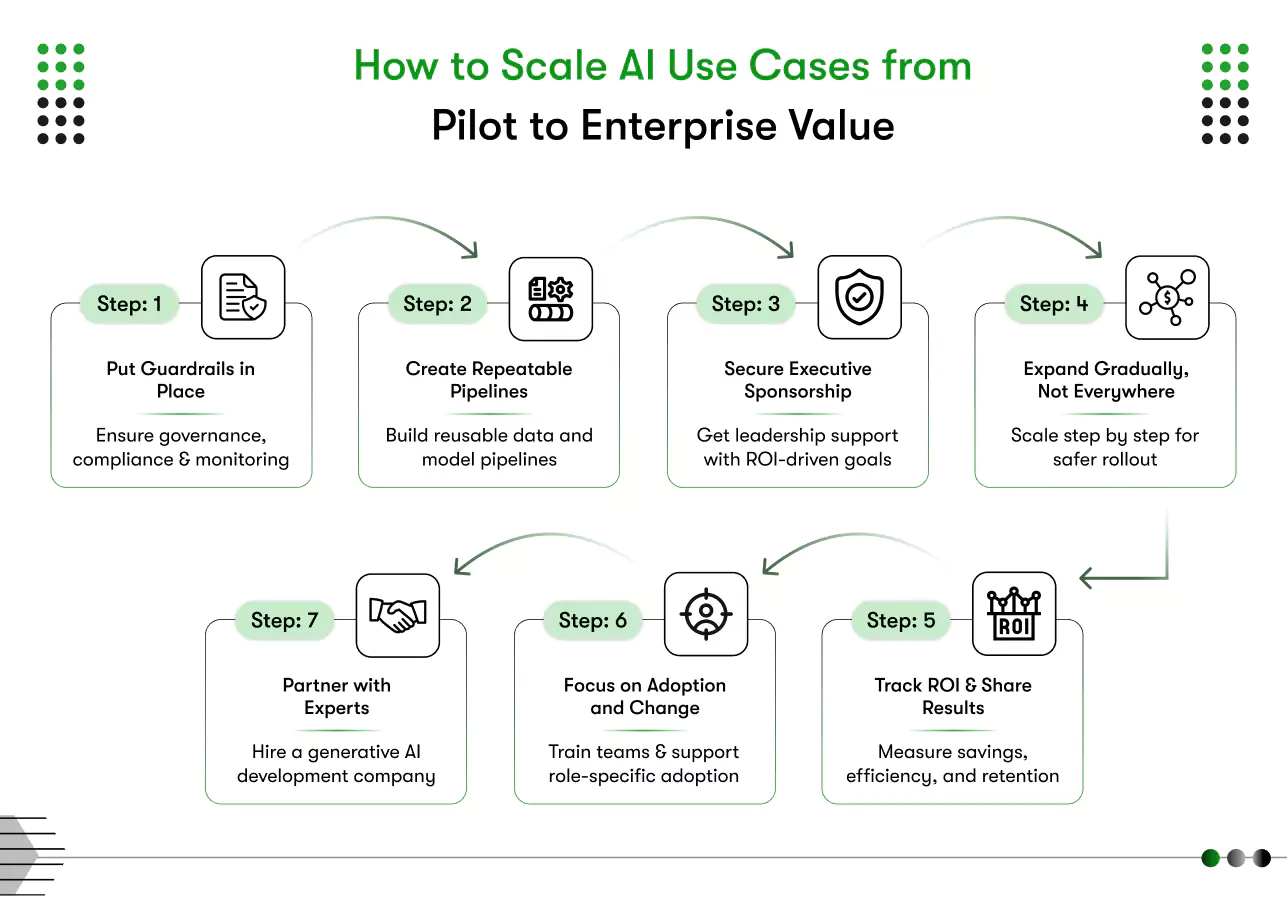
When done well, AI use cases grow from single wins into enterprise-wide advantage.
Step 1: Put guardrails in place
Scaling without guardrails creates risk. Leaders must confirm data governance, security, and compliance rules before rolling out more workflows. Teams that ignore this face audit issues and system breakdowns. Strong artificial intelligence use cases include monitoring, bias checks, and clear accountability.
Step 2: Create repeatable pipelines
Companies usually start small by applying AI to one process, such as fraud checks or demand forecasting, to see measurable results before expanding further. Companies need data and model pipelines that can be reused across teams. This reduces cost and prevents duplication. With this foundation, AI use cases by industry shift from one-off experiments to reliable business services.
Step 3: Secure executive sponsorship
Large AI programs succeed only when leaders back them with funding and alignment. Without that support, projects stall once the first workflow shows results. Executives need to see ROI tied to their goals in finance, operations, or customer experience. AI projects only continue after the first trial if executives commit money, assign staff, and make adoption a company priority. Without that backing, projects stop after one test and never create business impact.
Step 4: Expand gradually, not everywhere
If a company tries to apply AI across all regions or departments at the same time, costs rise, errors multiply, and teams struggle to adapt. The smarter approach is to expand one region, product line, or workflow at a time so results can be measured and issues corrected before wider rollout.
Step 5: Track ROI and share results
Finance teams want numbers that prove value. Report savings in dollars, hours saved, or customers retained. Track how much downtime dropped, how many false alerts were avoided, or how many deliveries arrived on time. These hard numbers show leaders why scaling AI use cases deserves more investment.
Step 6: Focus on adoption and change
Scaling AI succeeds only when employees trust and use the new tools. Leaders must explain how the changes reduce workload or improve results. Training should be role-specific so staff see direct benefits in their daily tasks. Adoption rises when employees get ongoing support, clear answers to questions, and recognition for early wins.
Scaling AI use cases is not about technology alone. It is about proving business impact, winning leadership support, and guiding teams through change. Companies that start with one proven workflow, measure ROI in real terms, and expand step by step see the fastest returns. If you are unsure where to begin, the next move is simple: choose one high-impact process and design a pilot you can measure
Step 7: Partner with the right generative AI development company
Scaling AI across the enterprise requires expertise, resources, and technical precision that many internal teams cannot sustain alone. Partnering with a generative AI development company ensures your workflows are designed for scale, security, and ROI.
The right partner provides industry-specific solutions, avoids costly trial-and-error, and accelerates enterprise adoption. With proven methodologies, they align tools with your strategy so you gain value without disruption or wasted investment..
Turning AI Potential into Business Advantage
Artificial Intelligence has reached a point where the question is not what it can do, but how fast you adopt it. Businesses that act today gain an edge in efficiency, decision-making, and customer trust. From healthcare to finance, retail to logistics, AI use cases already prove their value in measurable results. Leaders who prioritize practical adoption and scale wisely will capture growth that competitors cannot match. The future belongs to companies that treat AI as a core business driver, not an experiment.
At Kody Technolab, we help businesses move from AI concepts to results-driven implementations. Our team identifies the right use cases, builds tailored solutions, and ensures smooth adoption across your workflows. With clear ROI, industry expertise, and scalable delivery, we make AI practical, measurable, and growth-focused for your business.

Frequently Asked Questions (FAQs)
1. What is an AI use case in business?
An AI use case explains how artificial intelligence is applied to solve a clear business challenge. It defines the problem, the data involved, the AI model used, and the measurable results. For example, detecting fraud, forecasting demand, or automating service requests are all valid AI use cases because they tie technology directly to outcomes.
2. How do I know which AI use cases fit my business?
Start by identifying your most critical challenges, such as fraud, demand forecasting, or customer service. Then evaluate where data is already available. A quick pilot with clear metrics shows whether the use case is right for scaling.
3. How fast can I see results from AI?
Most businesses see measurable improvements within 3 to 6 months if they start with focused pilots. For example, predictive maintenance can cut downtime quickly, while customer-facing chatbots show instant efficiency gains.
4. Do I need a lot of data to get started?
Not always. Some use cases work with existing structured data like transactions or sensor logs. Where more data is required, external sources and synthetic datasets can fill gaps. The key is data quality, not just volume.
5. What are the risks of implementing AI use cases?
The main risks include poor data quality, lack of adoption, and unclear ROI tracking. These are reduced with strong governance, bias checks, and clear performance metrics. With expert guidance, most risks are manageable.
6. How can AI improve customer experience?
AI use cases improve personalization, reduce wait times, and provide smarter recommendations. From retail to finance, customers feel understood and supported, which directly drives loyalty and repeat business.
7. Why partner with Kody Technolab for AI use cases?
Kody Technolab helps businesses turn AI plans into measurable business value. Our team works with you from strategy to deployment, ensuring solutions fit your workflows and industry priorities. With the option to Hire AI Developers from our team, you gain expertise tailored to your business goals. We focus on clear ROI, smooth adoption, and long-term scalability.

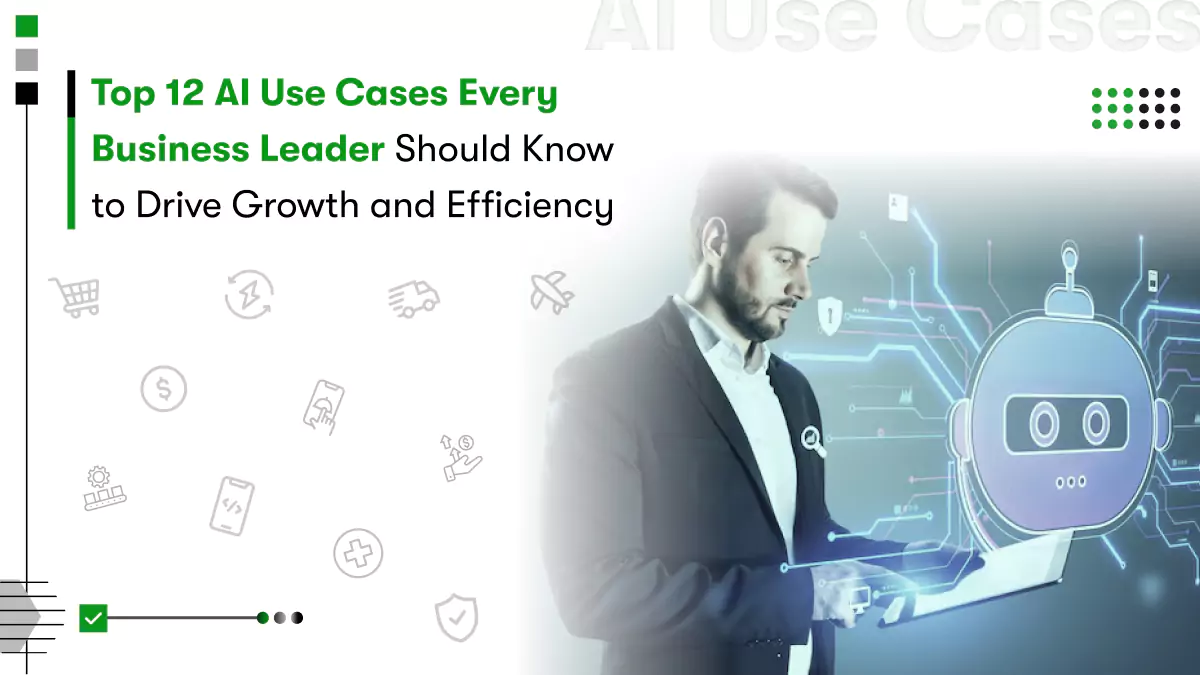
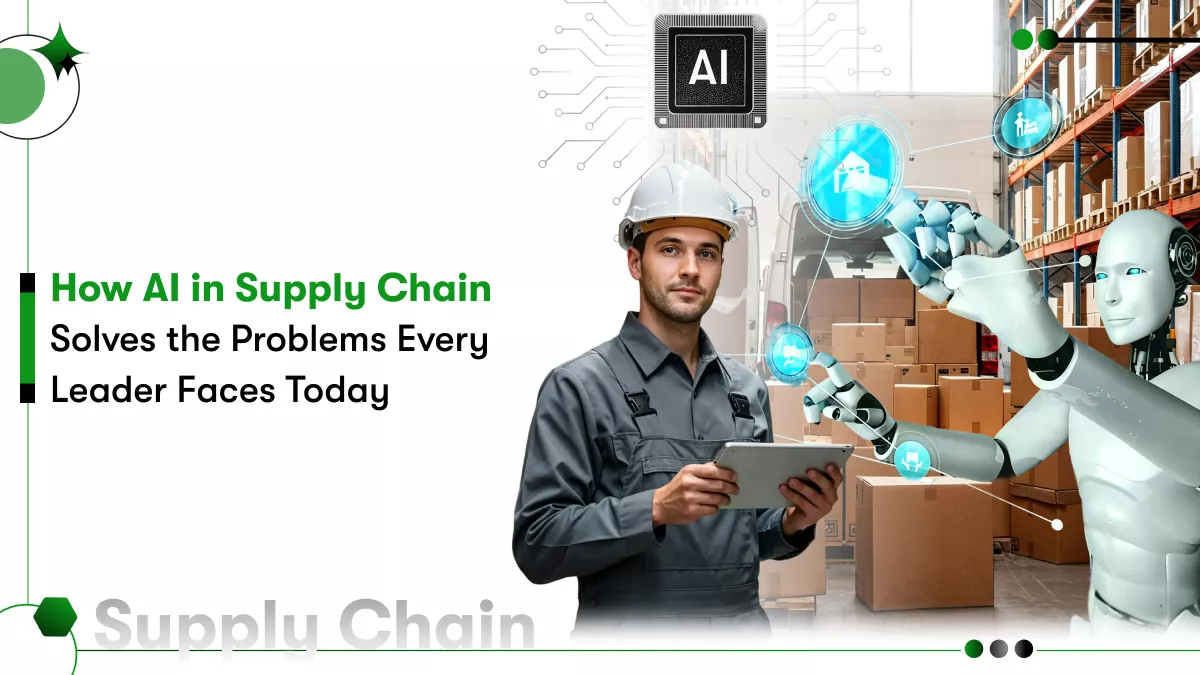

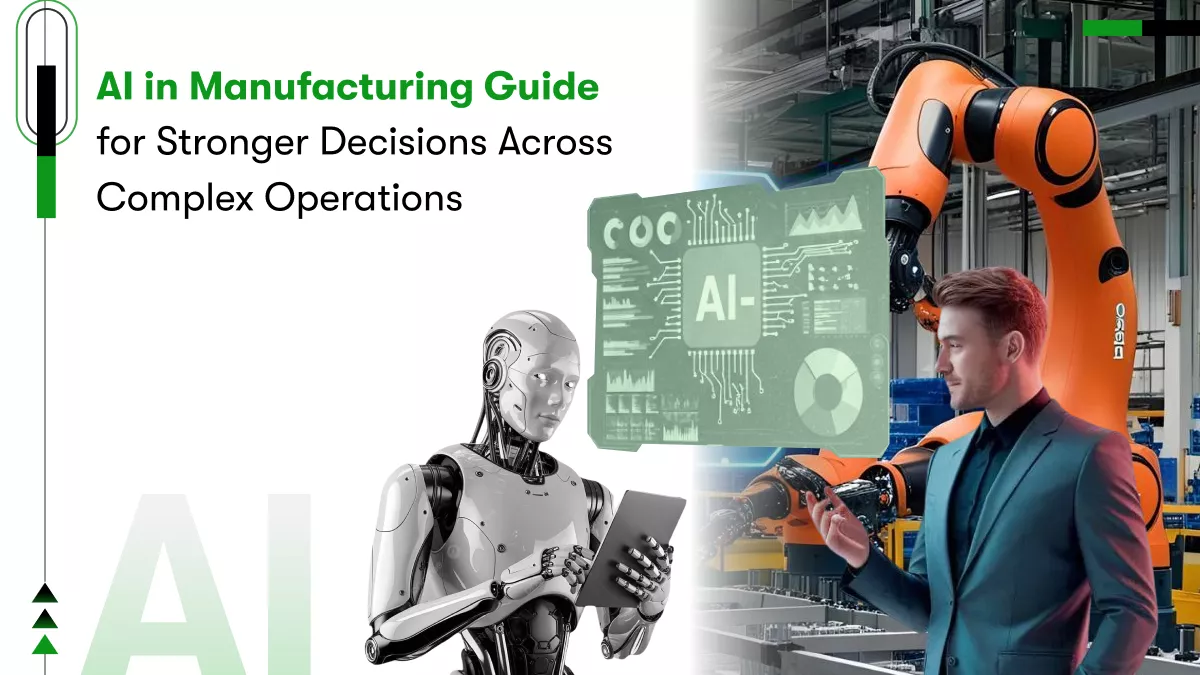

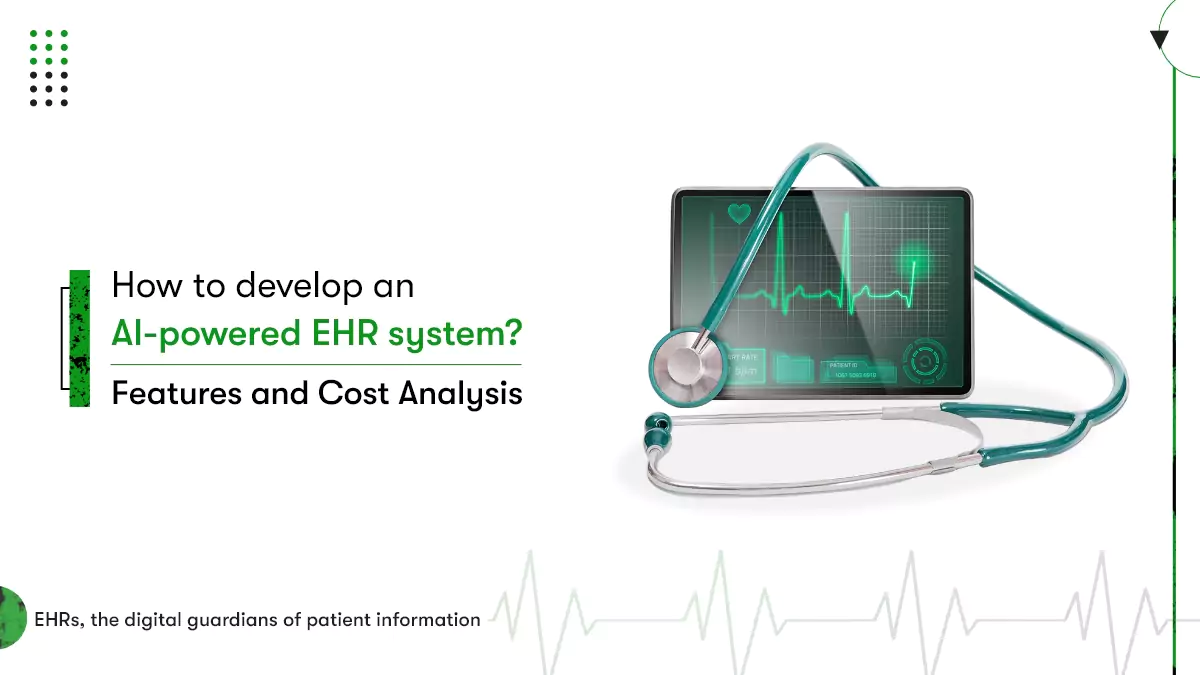






 Contact Information
Contact Information